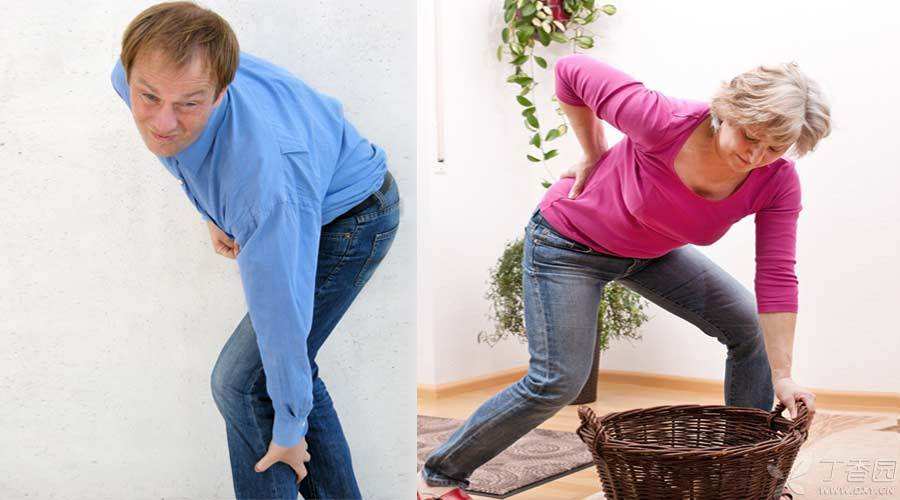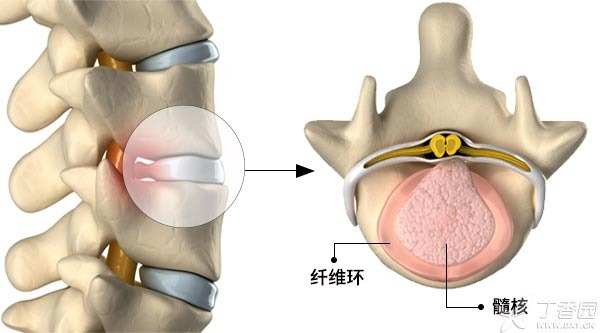
People often ask Dr. Clove, is it intervertebral disc herniation that my waist hurts? Is this what? How do we treat it?
The intervertebral disc is like a meat bun.
The intervertebral disc is located between the two vertebral bodies. Not only the lumbar vertebra has intervertebral discs, but also the cervical vertebra and thoracic vertebra have
Intervertebral disc is a structure composed of fibrocartilage tissue, with annulus fibrosus outside and nucleus pulposus inside.
I often compare with patients, intervertebral disc is like a flat steamed stuffed bun, annulus fibrosus is steamed bun skin, nucleus pulposus is stuffed bun stuffed bun stuffed bun stuffed bun stuffed bun stuffed bun stuffed bun stuffed bun stuffed bun stuffed bun stuffed bun stuffed bun stuffed bun stuffed bun stuffed bun stuffed bun stuffed bun stuffed bun stuffed bun stuffed bun stuffed bun
Because intervertebral discs are not bones, Therefore, it is invisible on X-ray films. The change of intervertebral disc can only be indirectly judged by judging the size of the gap between the two vertebral bodies. If you want to clearly see the change of intervertebral disc, you still need CT or MRI. This is why spinal doctors always ask patients to take CT and MRI.

Bulge, protrude, or protrude
People are upright walking animals, so the intervertebral disc will be subjected to vertical compression from gravity for a long time.
Just now we said, the intervertebral disc is like a steamed stuffed bun. If the steamed stuffed bun is only flattened and the skin has not been broken, then the diameter will become larger. To replace the intervertebral disc, the annulus fibrosus has not been broken and the nucleus pulposus inside has not leaked out. It is only the expansion of the intervertebral disc. This kind of situation is the expansion of the intervertebral disc and the expansion of the expansion.
If you continue to press this steamed stuffed bun, the skin of the steamed stuffed bun is broken, and part of the stuffing inside leaks out, that is, the annulus fibrosus is broken, and the nucleus pulposus inside leaks out. This kind of situation is disc herniation.
If it continues to be pressed down, the stuffing inside will fall out, that is, the nucleus pulposus inside will fall out after the annulus fibrosus is broken. Then this kind of situation is the most serious intervertebral disc prolapse.
These conditions are considered diseases.
Often some friends have lumbago and went to the hospital to take a lumbar magnetic resonance imaging, suggesting that the lumbar intervertebral disc herniation of such and such segment. Then he took the report and found me and said, “I have lumbar intervertebral disc herniation.”
Is lumbar disc herniation necessarily lumbar disc herniation?
There is one more word [disease], and the difference is very big.
Lumbar disc herniation refers to the change of disc structure, that is, the disc herniation is seen on imaging.
However, lumbar disc herniation refers to a series of symptoms caused by compression of nerves after disc herniation, such as leg numbness, sensory abnormalities, toe weakness, etc.
In other words, there may be many people with disc herniation, but the protruding disc does not necessarily compress the nerve. If it does not compress the nerve, then you can only say that it is disc herniation. Your lumbago symptoms are not necessarily caused by the disc, but may only be lumbar muscle strain.
However, after the intervertebral disc herniation, it compresses the nerve and causes a series of symptoms such as leg numbness. This is the intervertebral disc herniation.
How?
Some patients who have been diagnosed with lumbar disc herniation often fall into an endless anxiety.
Is it an operation? Or do you choose conservative treatment?
The basic principle is this:
If the symptoms are not particularly serious for the first attack, conservative treatment can be selected first. If recurrent attacks occur and conservative treatment is ineffective, surgical treatment can be considered.
1. Conservative treatment
Conservative treatment includes rest, physical therapy and the use of anti-inflammatory and analgesic drugs, etc.
In the past, most monographs, Chinese literature and even textbooks in China advocated that strict bed rest should be required for conservative treatment of lumbar disc herniation. However, if you look at English literature, you will find that this is not the case.
Some foreign studies have found that there is almost no difference between bed rest and activity maintenance for patients with lumbar disc herniation. Moreover, there are few studies abroad that advocate strict bed rest for patients with lumbar disc herniation.
It can be seen from this that it is possible to pay attention to rest, but it is not necessary to stay in bed strictly before rest. As long as the patient’s pain and dysfunction are not serious enough to be difficult to move, it is not necessary to restrict his activities artificially.
2. Surgical treatment
If the symptoms are very serious, surgical treatment should be considered. How to judge whether the symptoms are serious or not? This is still up to the doctor to judge.
The doctor will judge whether you have any signs of nerve root or cauda equina paralysis. If it is found, the doctor will say: You must have an operation in this situation and cannot delay any longer. At this time, you must listen to the doctor, and the operation must be done!
Responsible Editor: Cat Capricorn
